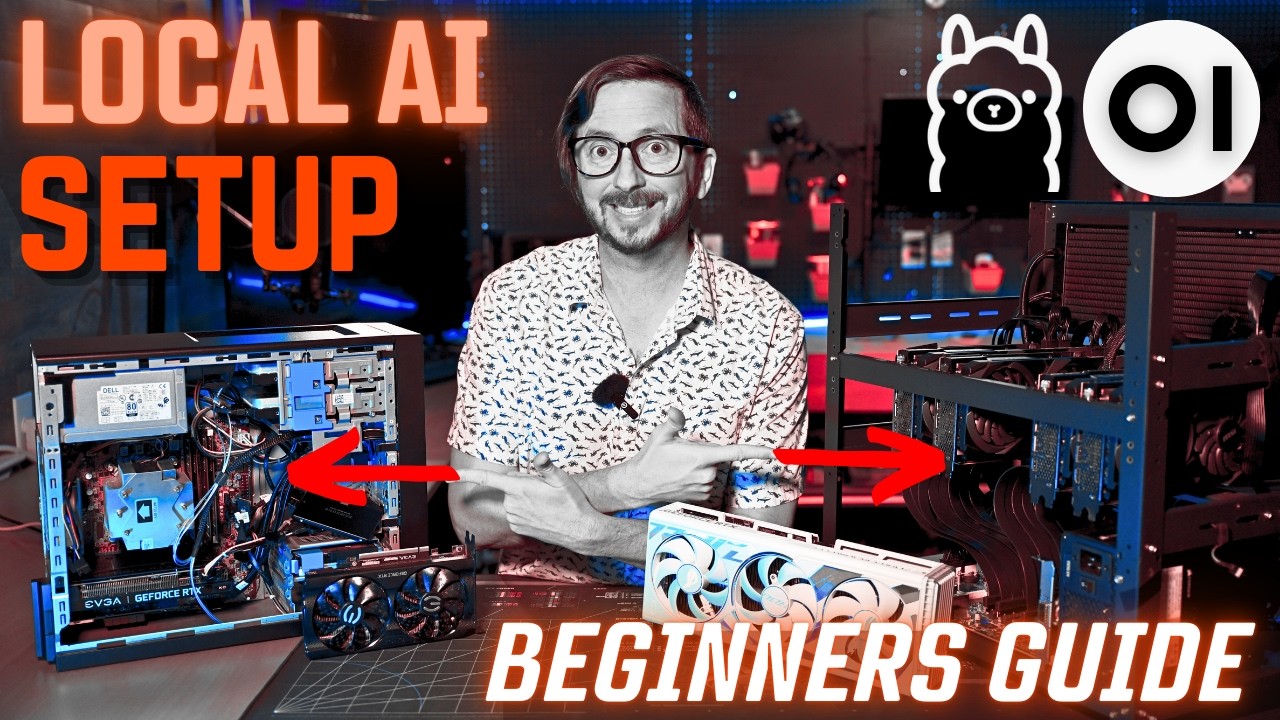The video provides a step-by-step guide for setting up a home AI server using Ollama and Proxmox, catering to various hardware configurations and emphasizing ease of installation and backup. It covers BIOS setup, Proxmox installation, NVIDIA driver configuration, and managing AI models, while also addressing potential GPU visibility issues and encouraging viewer engagement.
In this video, the presenter guides viewers through the process of setting up a home-based AI server using Ollama and Proxmox. The setup is designed to be straightforward and applicable to various hardware configurations, from high-end systems with multiple GPUs to single GPU setups. The presenter emphasizes the ease of backing up and restoring the system, providing viewers with scripts for a seamless installation process. The video is structured with chapters for easy navigation, allowing viewers to skip to specific sections as needed.
The demonstration features a robust rig equipped with four NVIDIA 3090 GPUs, extensive cooling, and a server-class motherboard. The presenter walks through the BIOS setup, ensuring that virtualization settings are enabled and that the boot mode is configured correctly. After making these adjustments, viewers are directed to download the latest version of Proxmox, which will serve as the virtualization platform for running AI workloads efficiently. The installation process is straightforward, involving the creation of a RAID 1 setup for redundancy and configuring network settings for management access.
Once Proxmox is installed, the presenter explains how to install the necessary NVIDIA drivers to optimize performance. This involves downloading the drivers from the NVIDIA website and executing installation commands in the Proxmox shell. After successfully installing the drivers, the presenter demonstrates how to set up an LXC container for running Ollama, highlighting the benefits of this approach for managing AI models and workloads. The installation of Ollama is streamlined, allowing users to quickly get their AI server up and running.
The video also covers the configuration of the Ollama interface, where users can manage models and settings. The presenter demonstrates how to download and configure a specific AI model, adjusting parameters to optimize performance. Additionally, the video touches on the importance of housekeeping tasks, such as backing up the system and managing storage space for AI models. The presenter emphasizes the capability of running AI workloads even on CPU-only systems, showcasing the flexibility of the setup.
Finally, the presenter addresses potential issues related to GPU visibility and provides solutions for ensuring that GPUs are properly passed through to the LXC container. By creating a cron job to initialize the NVIDIA drivers at boot, users can avoid common pitfalls that may arise during startup. The video concludes with a call to action for viewers to share their experiences and feedback, as well as an invitation to explore additional resources on the presenter’s website. Overall, the video serves as a comprehensive guide for setting up a powerful and versatile AI server at home.
